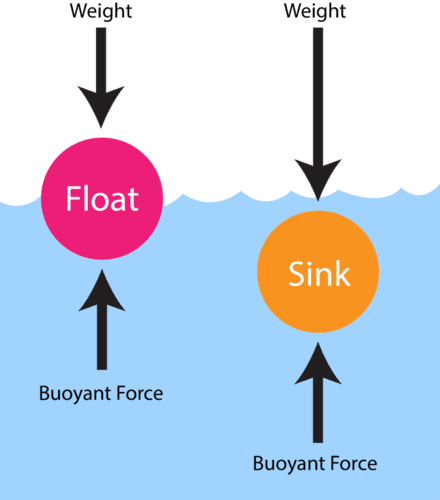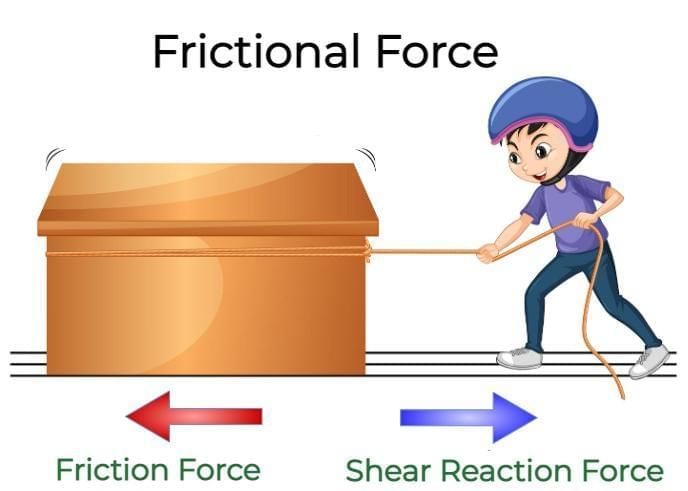Worksheet Solutions: Exploring Forces | Worksheets with Solutions for Class 8 PDF Download
| Table of contents |

|
| Multiple Choice Questions (MCQs) |

|
| Fill in the Blanks |

|
| Short Answer Questions |

|
| Match the Following |

|
| Application/Reasoning (Short Problems) |

|
Multiple Choice Questions (MCQs)
Instruction: Select the correct option for each question.
Q1. In science, a force is defined as:
a) Only a push
b) Only a pull
c) A push or a pull
d) Energy of motion
Ans: c) A push or a pull
Any push or pull on an object is called a force.
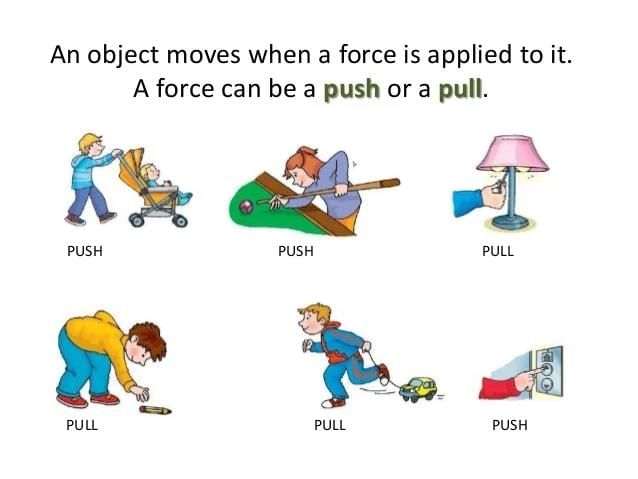
Q2. Which of these is NOT an effect of force?
a) Change of shape
b) Change of direction
c) Production of light
d) Start/stop motion
Ans: c) Production of light
Force changes motion or shape; producing light is not a direct effect of force.
Q3. Forces always involve:
a) Only one object
b) Interaction between two objects
c) Only moving objects
d) Only heavy objects
Ans: b) Interaction between two objects
A force arises from interaction (e.g., hand and table).
Q4. The SI unit of force is:
a) Joule (J)
b) Watt (W)
c) Newton (N)
d) Pascal (Pa)
Ans: c) Newton (N)
Force is measured in newtons.
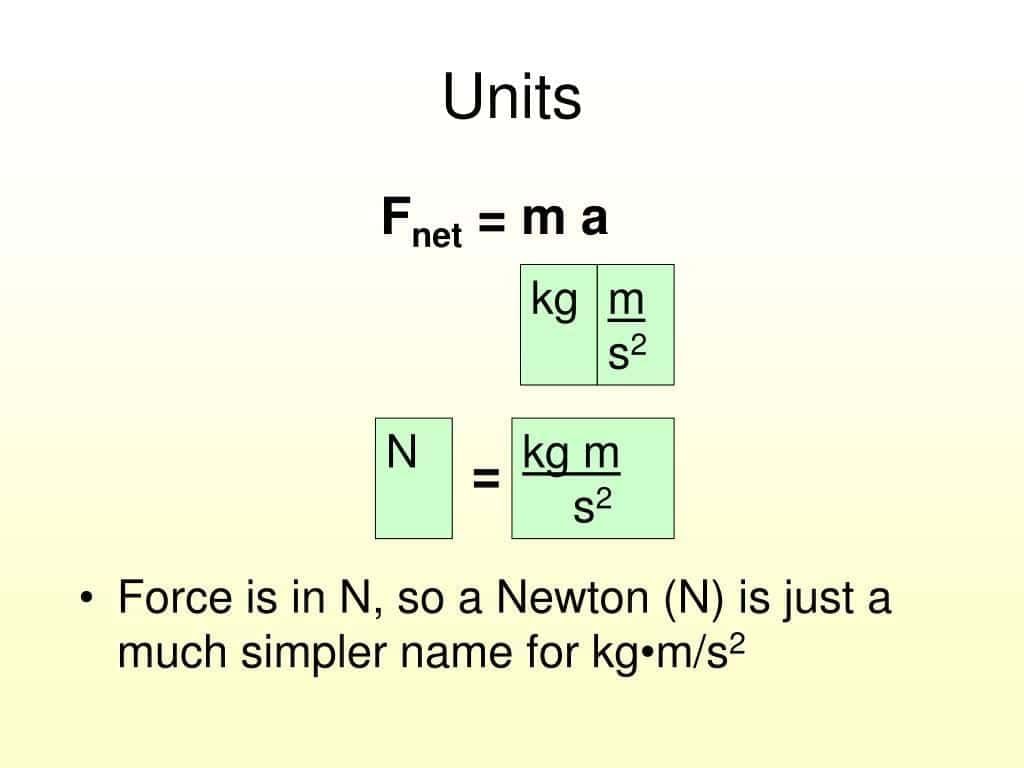
Q5. Friction is a force that:
a) Aids motion
b) Always increases speed
c) Opposes motion between surfaces in contact
d) Acts only in liquids
Ans: c) Opposes motion between surfaces in contact
Friction resists motion; rough surfaces give more friction.
Q6. Which is a non-contact force?
a) Muscular force
b) Friction
c) Magnetic force
d) Push with a stick
Ans: c) Magnetic force
It acts without physical contact.
Q7. Gravity is:
a) Sometimes attractive, sometimes repulsive
b) Always repulsive
c) Always attractive
d) Only acts on Earth
Ans: c) Always attractive
Gravitational force only attracts.
Q8. Weight is measured in:
a) Kilogram (kg)
b) Newton (N)
c) Meter (m)
d) Joule (J)
Ans: b) Newton (N)
Weight is a force; its SI unit is newton.
Q9. An object floats in a liquid when:
a) Weight > buoyant force
b) Weight = buoyant force
c) Weight < buoyant force
d) There is no gravity
Ans: b) Weight = buoyant force
Floating occurs when upthrust equals weight.
Fill in the Blanks
Instruction: Fill in the blanks with the correct word based on the chapter.
Q1. A force is a __________ or a __________.
Ans: push; pull
Both pushes and pulls are forces.
Q2. If an object’s speed or direction changes, a __________ has acted.
Ans: force
Force causes change in motion or shape.
Q3. The SI unit of force is the __________ (symbol: N).
Ans: newton
Standard unit for force.
Q4. Friction always acts in a direction __________ to motion.
Ans: opposite
It resists motion between surfaces.
Q5. Forces that act without contact are called __________ forces.
Ans: non-contact
Examples: magnetic, electrostatic, gravitational.
Q6. The force with which Earth pulls objects is called __________.
Ans: gravity (or gravitational force)
Gravity attracts objects to Earth.
Q7. Weight is a __________ and is measured in newtons.
Ans: force
Weight = mass × gravitational acceleration.
Q8. The device used to measure weight (force) in newtons is a __________ balance.
Ans: spring
Stretch of the spring indicates force.
Q9. The upward force exerted by a liquid on an immersed object is called __________ force.
Ans: buoyant (or upthrust)
It acts opposite to weight.
Q10. An object sinks when its __________ is greater than the buoyant force.
Ans: weight
If weight > upthrust, the object sinks.
Short Answer Questions
Instruction: Answer the following questions in 2–3 lines.Q1. How does friction depend on the nature of surfaces?
Ans: Rough surfaces have more tiny irregularities, leading to higher friction; smooth surfaces have fewer irregularities, so friction is less.
Q2. Explain why cycling uphill feels harder than cycling downhill.
Ans: Uphill, you work against gravity and friction, requiring greater muscular force. Downhill, gravity aids motion, so you need little or no pedaling.
Q3. What does “forces work in pairs” mean?
Ans: When you push an object, it exerts an equal and opposite force on you. The interaction ends when contact ends.
Q4. How do we find the least count of a spring balance?
Ans: Divide the value between two major marks by the number of small divisions between them.
Q5. Why do streamlined shapes help in air or water?
Ans: They reduce fluid friction (drag), allowing objects like cars, planes, and boats to move more easily.
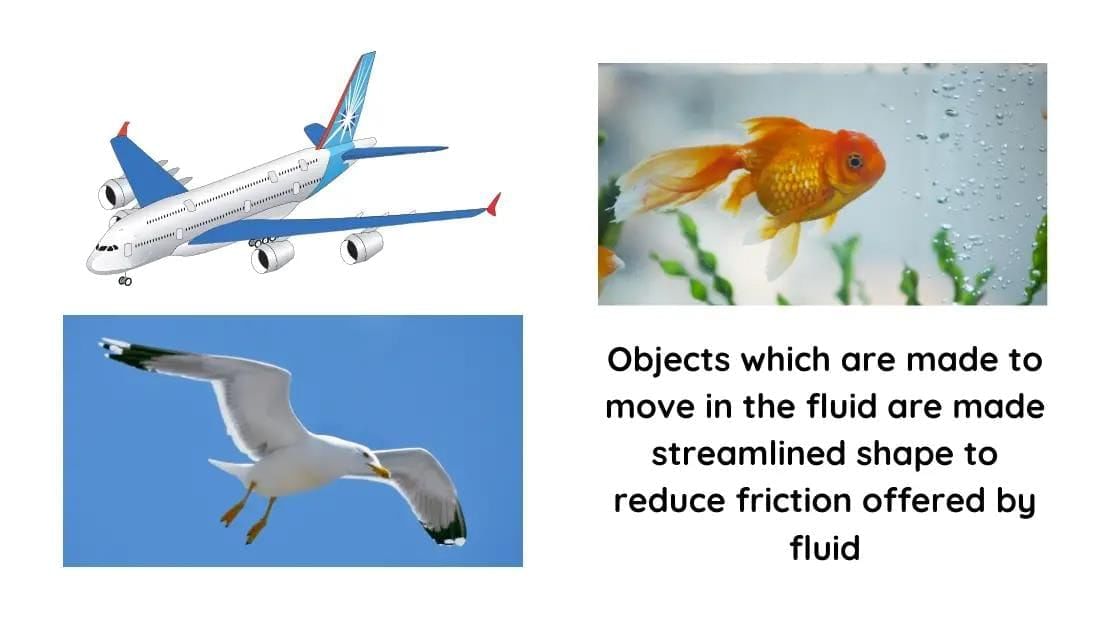
Match the Following
Instruction: Match Column A with the correct option in Column B.
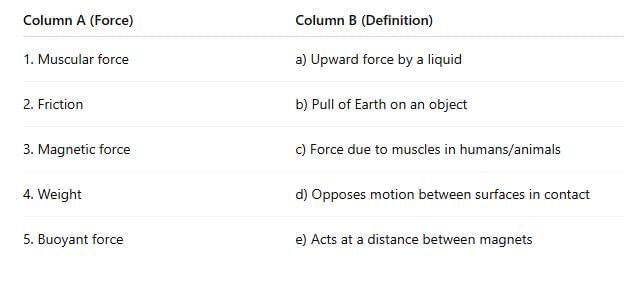
Ans:
Muscular force — c) Force due to muscles in humans/animals
Explanation: Movements like lifting, pushing, and pulling use muscles.Friction — d) Opposes motion between surfaces in contact
Explanation: It resists sliding/rolling and depends on surface roughness.Magnetic force — e) Acts at a distance between magnets
Explanation: Magnets attract/repel without contact.Weight — b) Pull of Earth on an object
Explanation: Weight is gravitational force; measured in newtons.Buoyant force — a) Upward force by a liquid
Explanation: Liquids push up on immersed objects; this is upthrust.
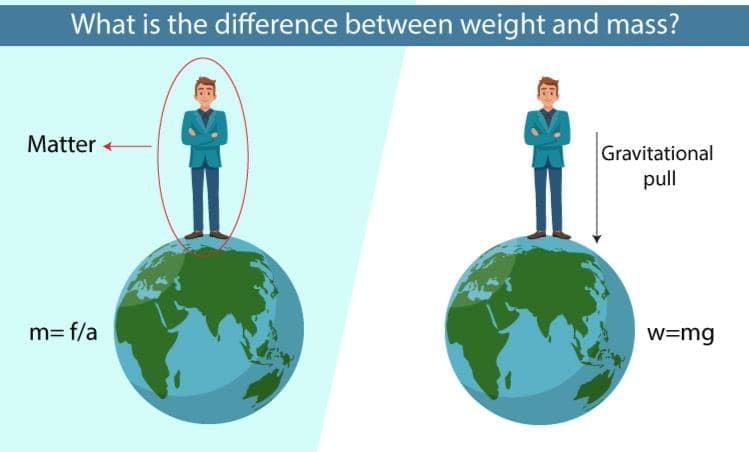
Application/Reasoning (Short Problems)
Instruction: Answer the following briefly in 2–3 lines.
Q1. A wooden block is pushed on a rough table and stops after some distance. Why?
Ans: Friction between the block and table opposes motion and converts kinetic energy to heat, bringing the block to rest.
Q2. A 1 kg object has a weight of about 10 N on Earth. What will be its weight on the Moon (g ≈ 1.6 m/s²)?
Ans: About 1.6 N. Explanation: Weight = mass × g = 1 kg × 1.6 m/s².
Q3. A spring balance has marks 0 to 5 N with 10 equal divisions between each newton. What is its least count?
Ans: 0.1 N per division. Explanation: 1 N ÷ 10 divisions = 0.1 N.
Q4. Two balloons rubbed with wool repel each other. Which force is acting and why?
Ans: Electrostatic force; both balloons have like static charges, so they repel.
Q5. A stone sinks in water but a sealed empty plastic bottle floats. Why?
Ans: The stone’s weight is greater than buoyant force, so it sinks. The bottle’s average density is less and upthrust balances its weight, so it floats.
FAQs on Worksheet Solutions: Exploring Forces - Worksheets with Solutions for Class 8
| 1. What are the different types of forces explored in the class 8 physics curriculum? |  |
| 2. How can we demonstrate the effects of friction in a classroom experiment? |  |
| 3. What is the relationship between mass and gravitational force according to the laws of physics? |  |
| 4. Can you explain Newton's three laws of motion in simple terms? |  |
| 5. Why is it important to understand forces in our daily lives? |  |

